The animal kingdom provides so much diversity that it’s almost impossible to keep track of all the different species in the world. Sometimes the distinction between close relatives is too hard to even notice. But different species often evolve in similar ways because of their environment.
We at Bright Side gathered 16 pairs of animals who are almost indistinguishable from each other at first sight in order to show you the differences between them.
1. Jaguar vs leopard
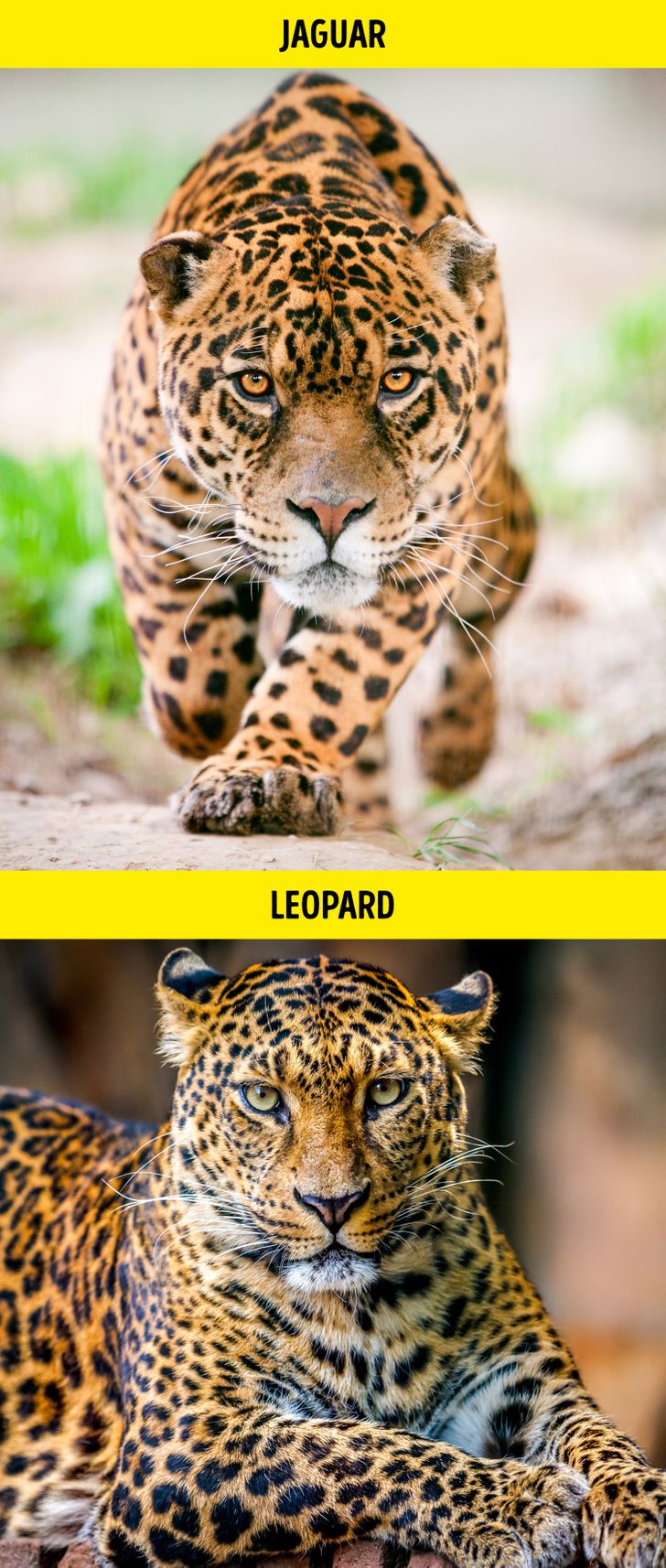
Despite their similarities, these big cats inhabit different continents and climate zones: leopards live in African savannas, while jaguars dwell in South American tropical forests. Jaguars are also larger and bulkier, and unlike leopards and many other cats, they’re fond of water.
2. Alligator vs crocodile
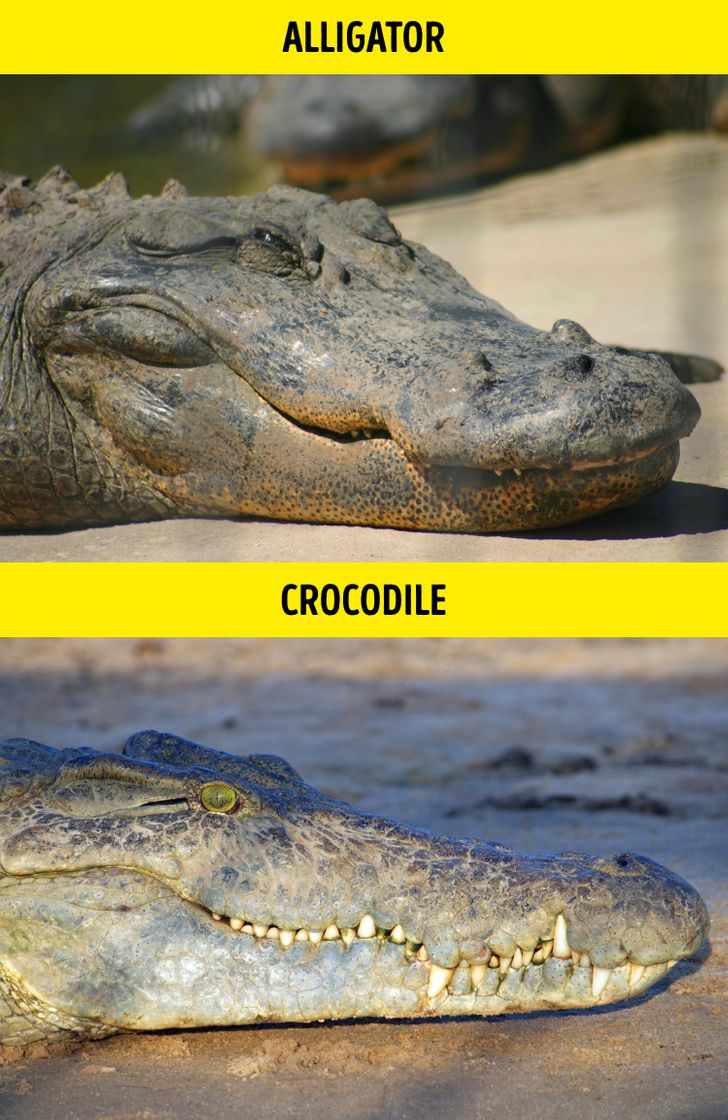
You can easily identify these 2 by the shape of their snouts: crocodiles have prominent, elongated V-shaped faces while alligators have shorter, wider U-shaped ones. Also, consider the teeth: crocodiles display their trademark toothy “grin” with every fourth tooth visible. Conversely, the alligator’s upper jaw is broader than the lower one, so its teeth aren’t visible for the most part.
3. Wasp vs hornet
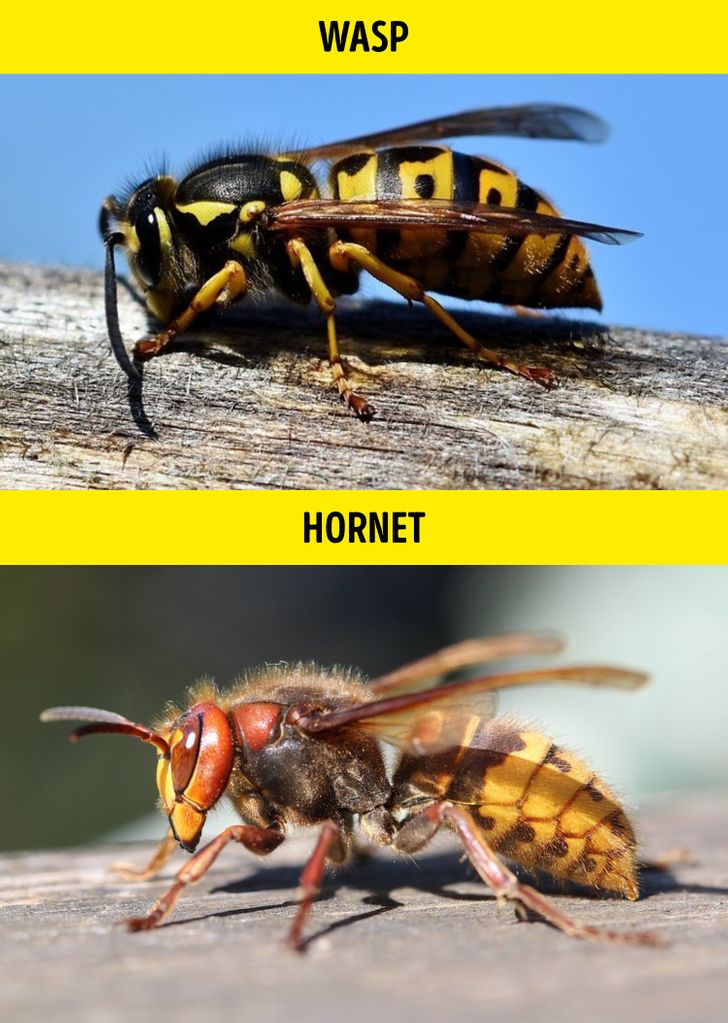
Both insects are menacing, that’s for sure. Hornets are larger and boast orange and black coloring, resembling spots rather than stripes, while wasps are more brightly colored and have yellow and black rings. You’re better off avoiding both.
4. Seal vs sea lion
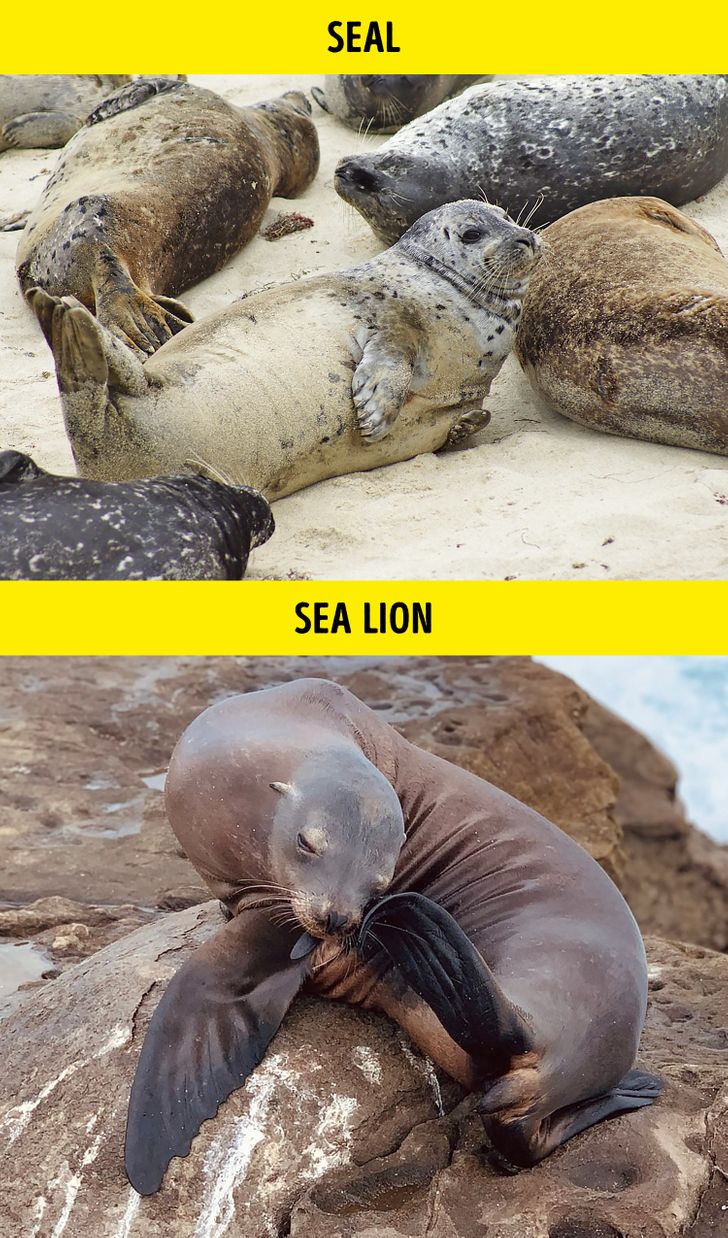
You’ve most likely met seals as cute plushy animals and sea lions as circus acrobats. Seals are covered with fur and have tiny front flippers which prevent them from walking, forcing them to wiggle on their bellies. Sea lions have smooth skin and vast flippers that they use to move on the ground.
5. Turtle vs tortoise
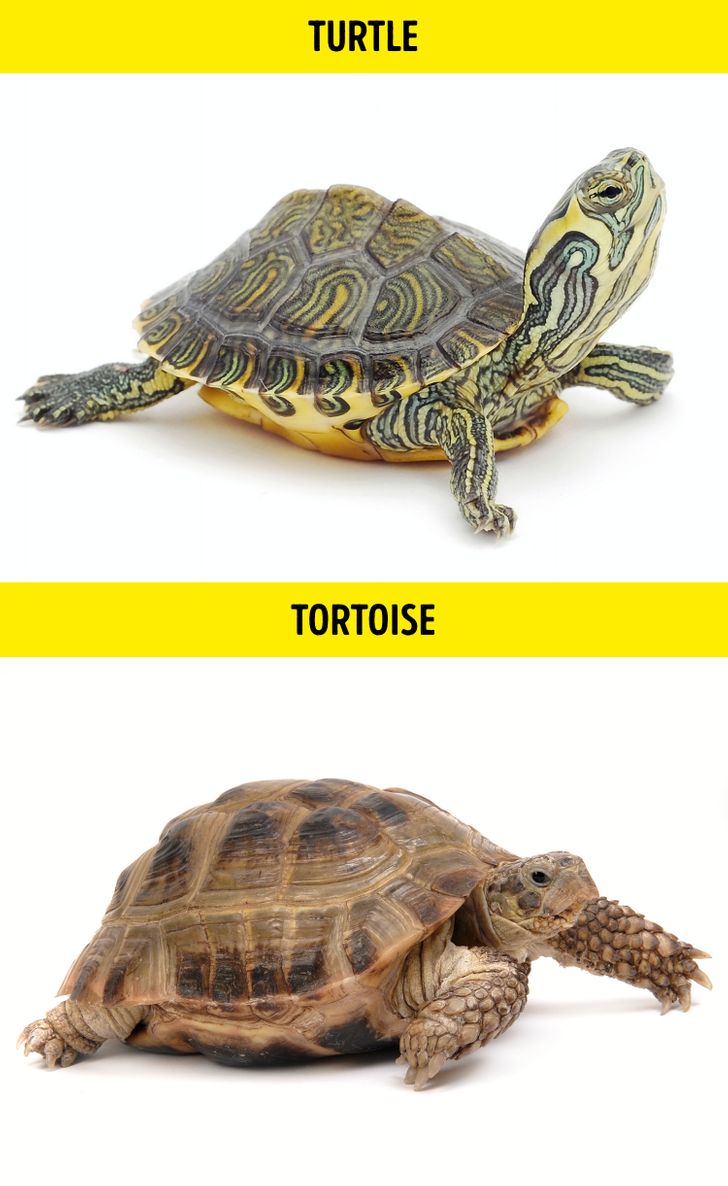
These 2 are both mobile (but very slow at that) and boast 4 legs. But the “turtle rock” is aquatic and has markings that resemble stains and circles on the water to better hide in the ponds. The “tortoise rock” is a land animal and spends most of its time on the ground — that is, as a literal rock.
6. Raven vs crow vs rook vs jackdaw
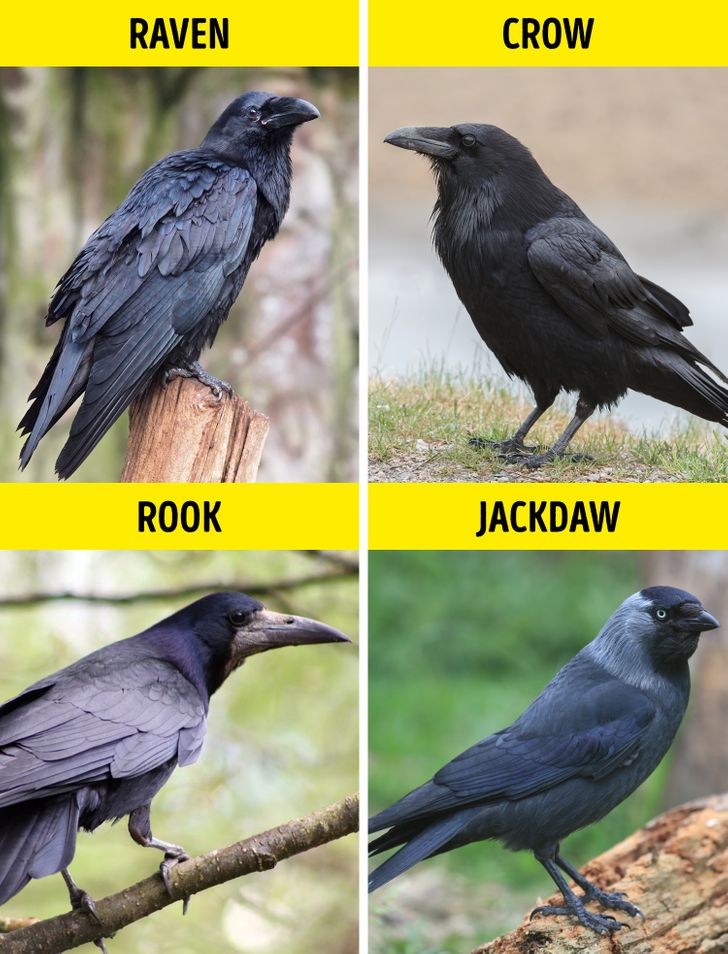
Most corvids look fairly similar (excluding jays who are like a theatre kid in a goth family). Ravens are the loftiest and most fashionable thanks to their “beard” of throat feathers. Crows and rooks are of the same size, but rooks have a distinct grey beak and fancy feather “pants” on their legs. Jackdaws are the goofiest-looking thanks to their very short beaks and a round heads with black caps.
7. Donkey vs mule
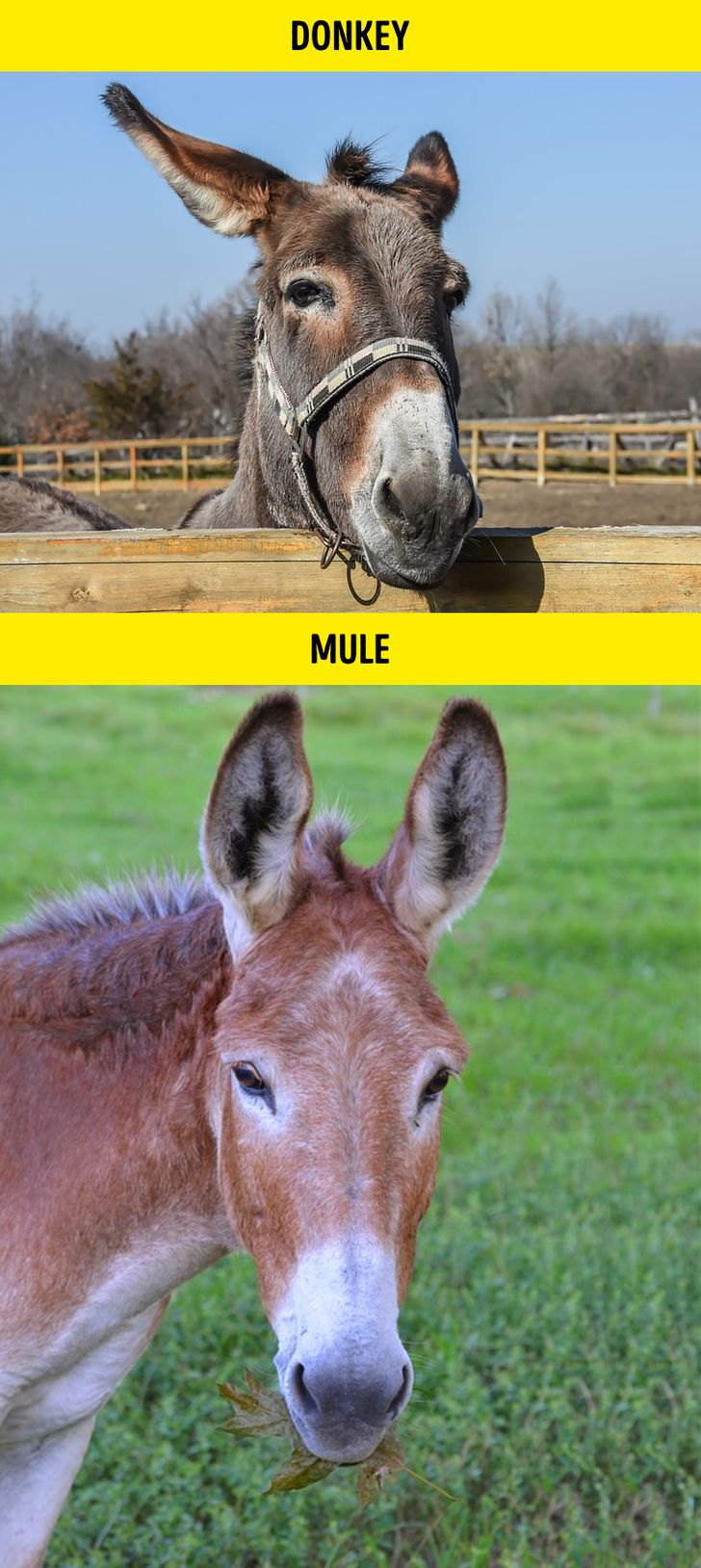
This one is tricky for a simple reason: while the donkey is its own species, a mule is a hybrid of donkey and horse. Funnily enough, it looks exactly like what you’d think these 2 animals would look like: an elegant head of a horse with ridiculously oversized donkey ears.
8. Hare vs rabbit
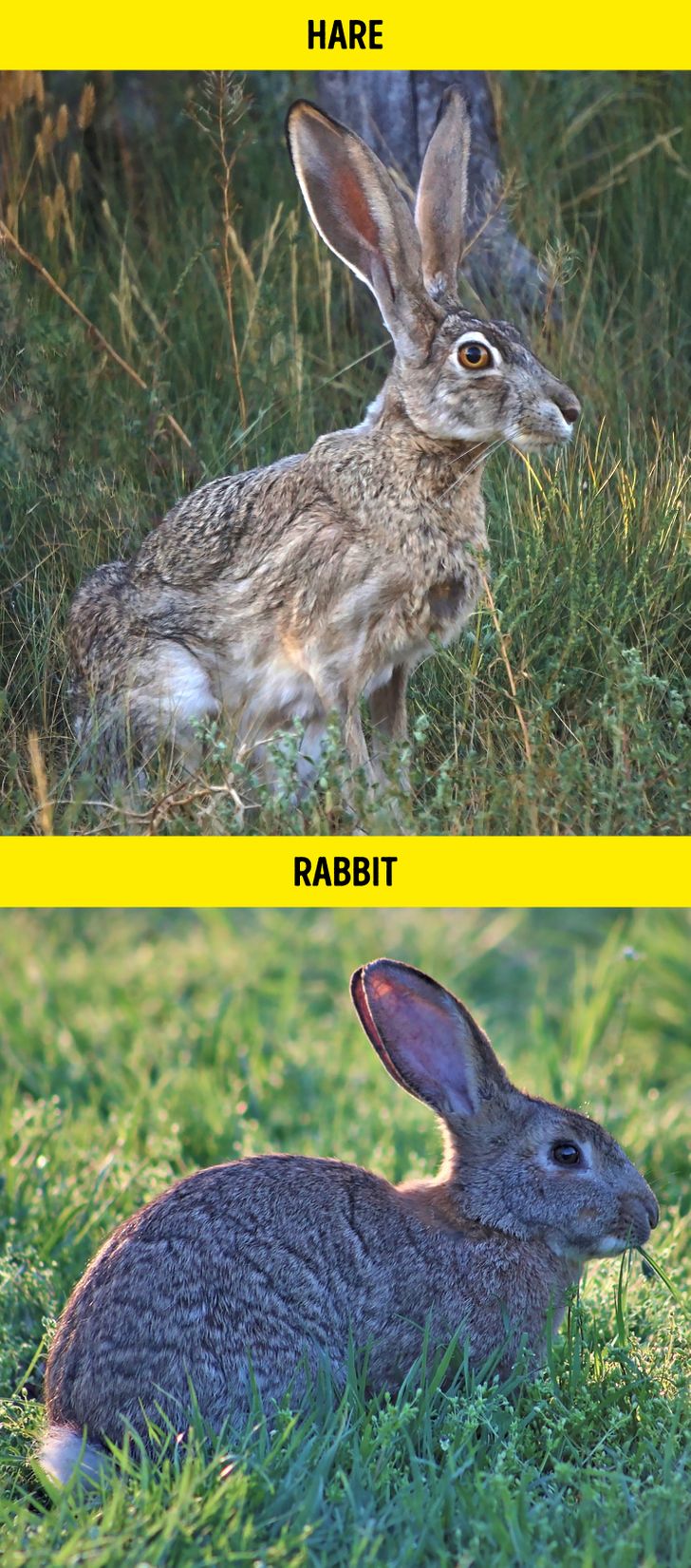
If you want a cuddly little pet, a rabbit is your best bet, but a hare definitely is not. Hares are larger and faster and have longer legs and ears. Rabbits are smaller, fluffier, and overall “cuter.” They even eat different food: rabbits prefer vegetables (like carrots) and soft grass while hares prefer bark and twigs. Rabbits are social animals while hares tend to be solitary. It’s no wonder rabbits are easily domesticated while hares mostly stay feral.
9. Moth vs butterfly

Moths have tent-like wings while butterflies flap their wings vertically. Moths usually rest with their wings open, while butterflies rest with their wings closed. Their antennas also differ: butterflies’ are long and thin and moths’ are short and feathery. Butterflies are strictly diurnal, while moths are mostly nocturnal.
10. Dolphin vs porpoise
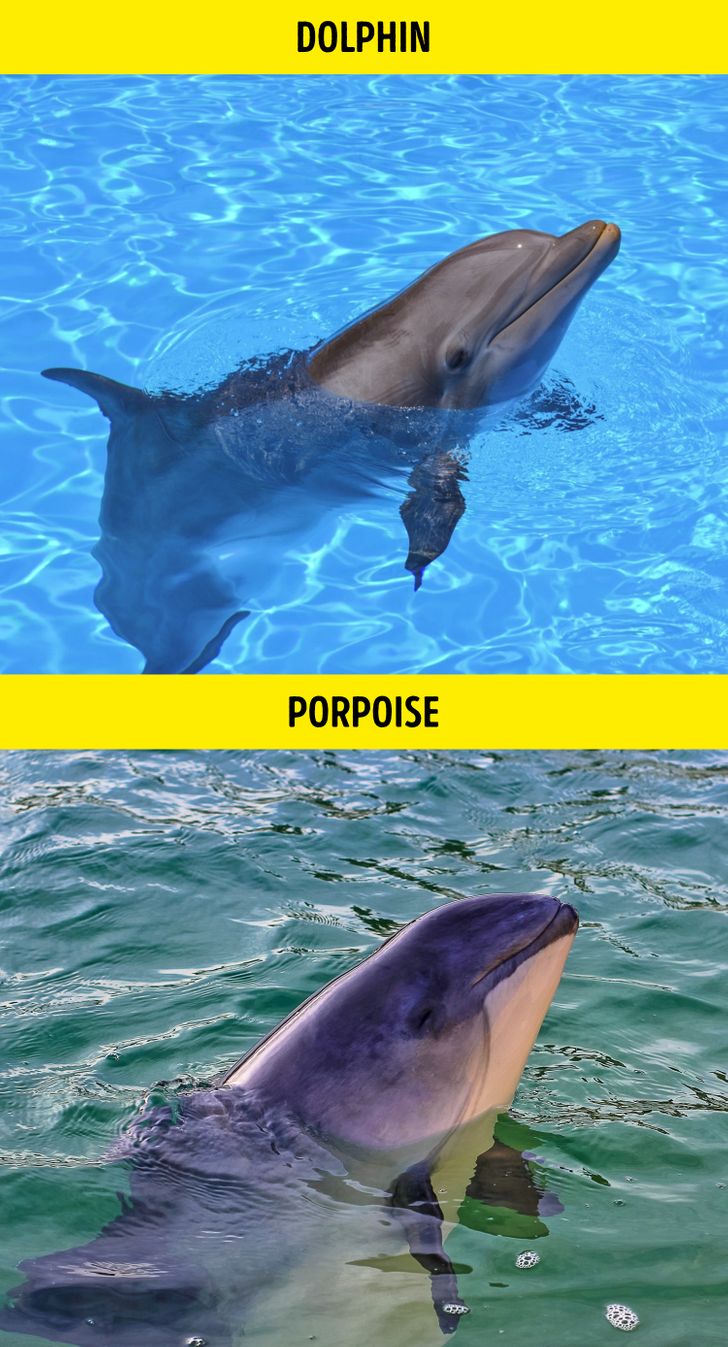
The difference between dolphins and porpoises comes down to their snouts, fins, and figures. Dolphins have long “beaks,” slender bodies, and curved dorsal fins. Porpoises have more flat, sloping faces, smaller flippers, and shorter triangular dorsal fins.
11. Weasel vs stoat
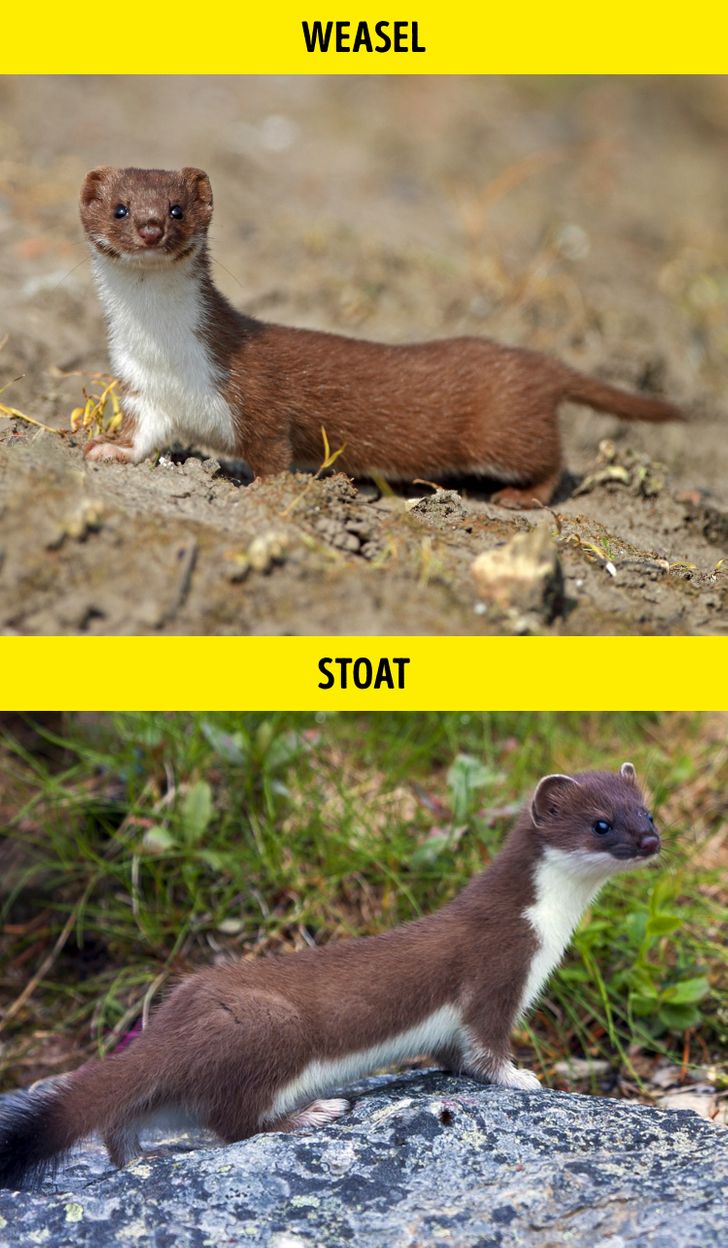
These 2 animals are close relatives. Stoats are bigger and have long tails with fuzzy black tips, while weasels’ tails are short and of the same color as the rest of the body. Stoats move in a bouncing gait with an arched back which looks hilarious, and weasels keep closer to the ground. Stoats also turn white in winter.
12. Eagle vs hawk vs falcon
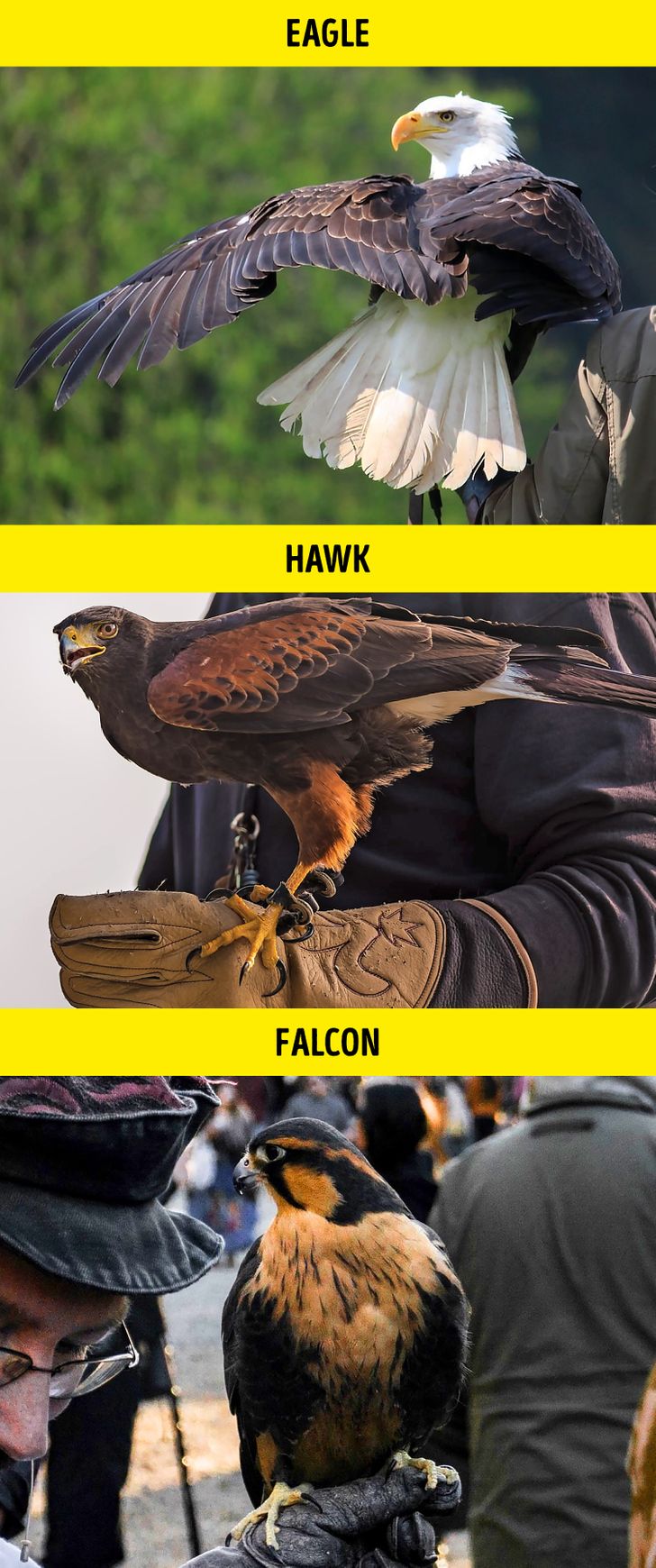
Eagles are gigantic, powerful birds who prefer to live in open spaces like cliffs and mountains. Hawks are a little smaller and more nimble in the air, capable of maneuvering in more closed areas. Falcons are the smallest and fastest of the 3 and differentiate the most visually: they have larger eyes and shorter beaks.
13. Mouse vs rat
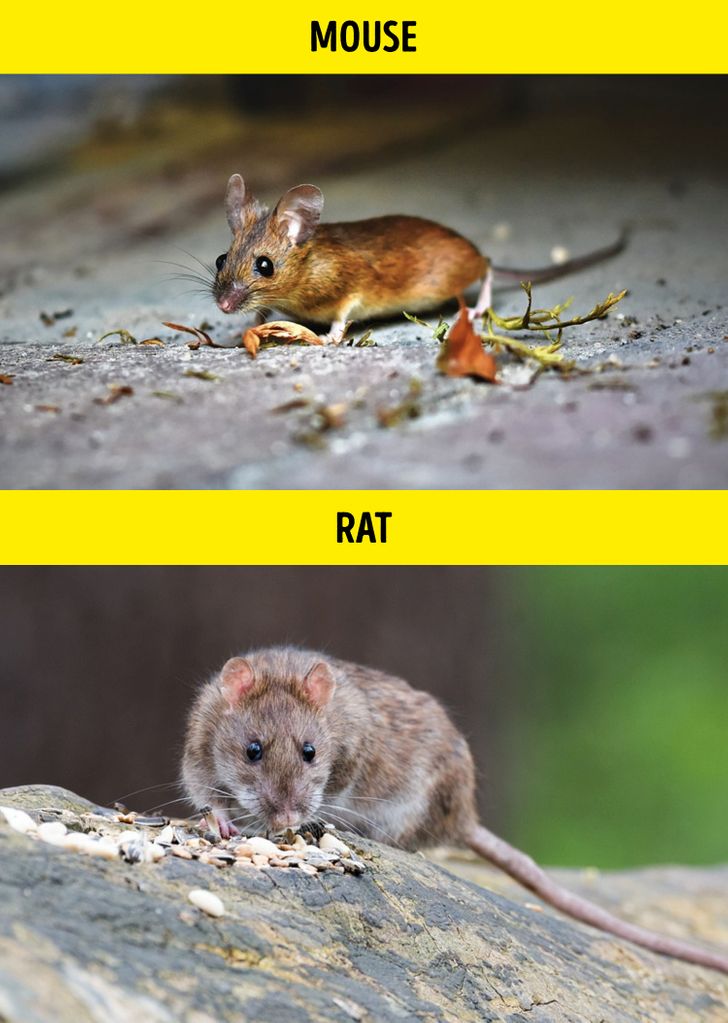
The 2 most famous (or infamous) rodents can be easily distinguished by 3 things: their size, tail, and ears. Mice are diminutive, even compared to young rats; they have thin long tails covered with fur while rats’ tails are thick and hairless. Mice have ears that are bigger in proportion to their bodies and are round and floppy with a tiny, triangular face. Rats’ faces are more prominent and blunt.
14. Seagull vs albatross
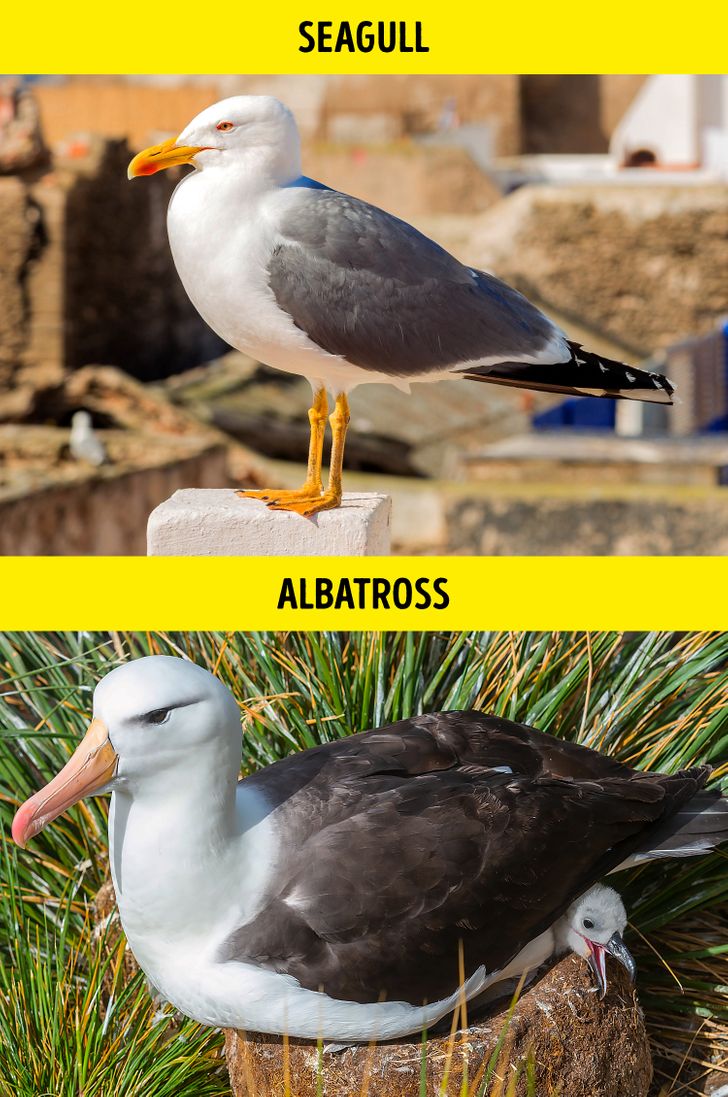
Gulls often live near water, be it the sea or ponds, and are rather acrobatic while diving and fish-catching, but aren’t fans of long voyages, unlike albatrosses. Albatrosses are portly birds who live in constant flight over the sea. They even have unique nostrils that allow them to remove salt from water and food.
15. Wolverine vs honey badger
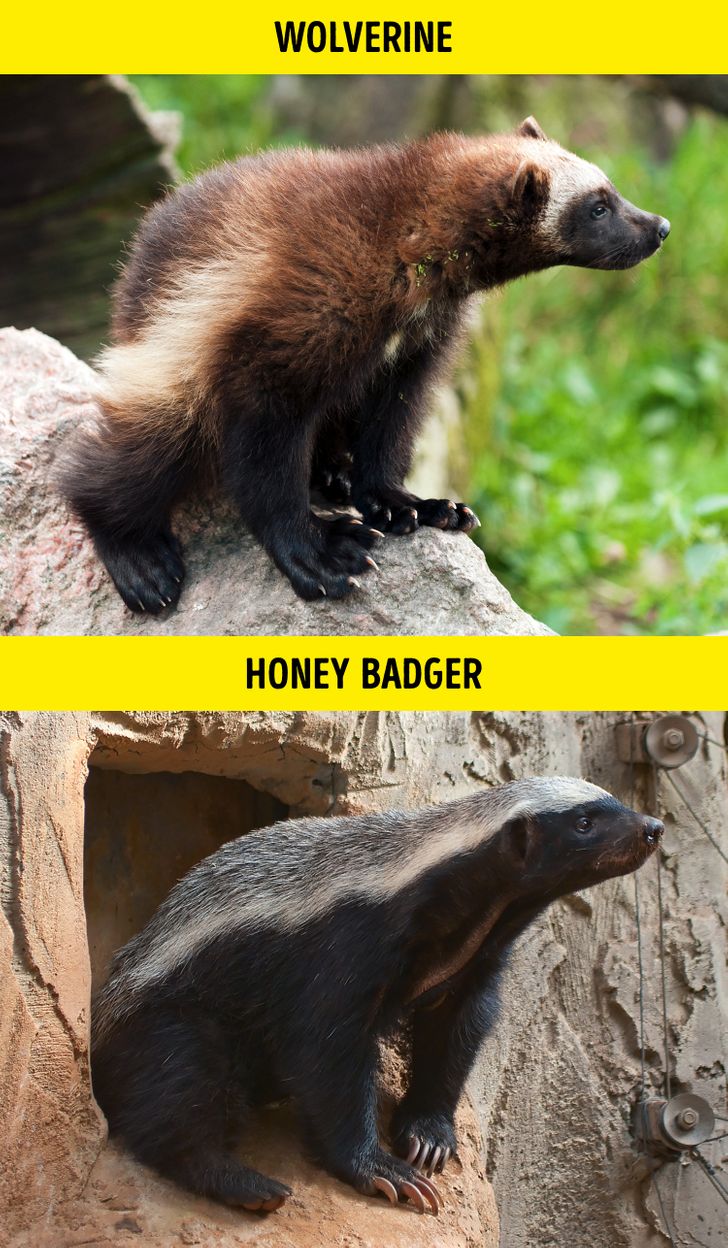
Despite living in different climate zones — the honey badger that lives in Africa and the wolverine that resides in the northern forests — both belong to the Mustelidae family. Wolverines are taller with longer legs and noticeable ears and have brown fur with yellow rings. Honey badgers keep closer to the ground and have black bodies with a white “cape” on their backs.
16. Wolf vs coyote vs jackal
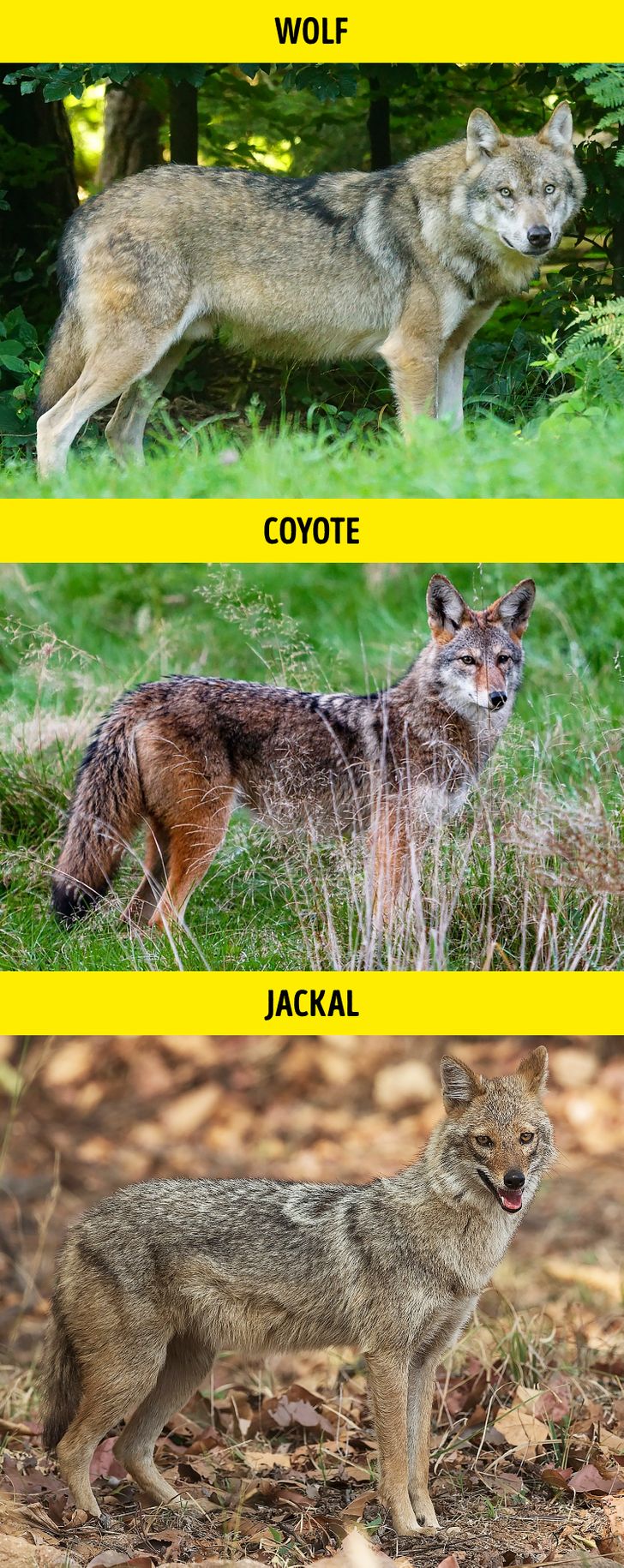
These 3 are “good boys and girls” that parade all over the globe. Jackals live in Africa, Asia, and India; coyotes live in Northern America; and wolves live all over the place. Wolves are large, sturdy animals, while coyotes and jackals possess a more lean and fragile frame.
Coyotes are recognizable for the red fur on their faces and ears while jackals have a more yellow-colored coat. Additionally, jackals are noticeably less fluffy because they don’t have to endure the harshness of winter.
Funny bonus: Wolverine vs the honey badger

What kinds of animals have ever confused you? If you know more examples, share them in the comments!
Preview photo credit shutterstock.com, shutterstock.com
Mystery of Princess Catherine’s Hospitalization Finally Uncovered
This year has been packed with enlightening experiences, particularly for avid followers of the royal family. However, among various occurrences, there lies a more intimate and enigmatic narrative involving the Princess of Wales and King Charles, both grappling with cancer.
Speculation arose as to why Princess Catherine had vanished.
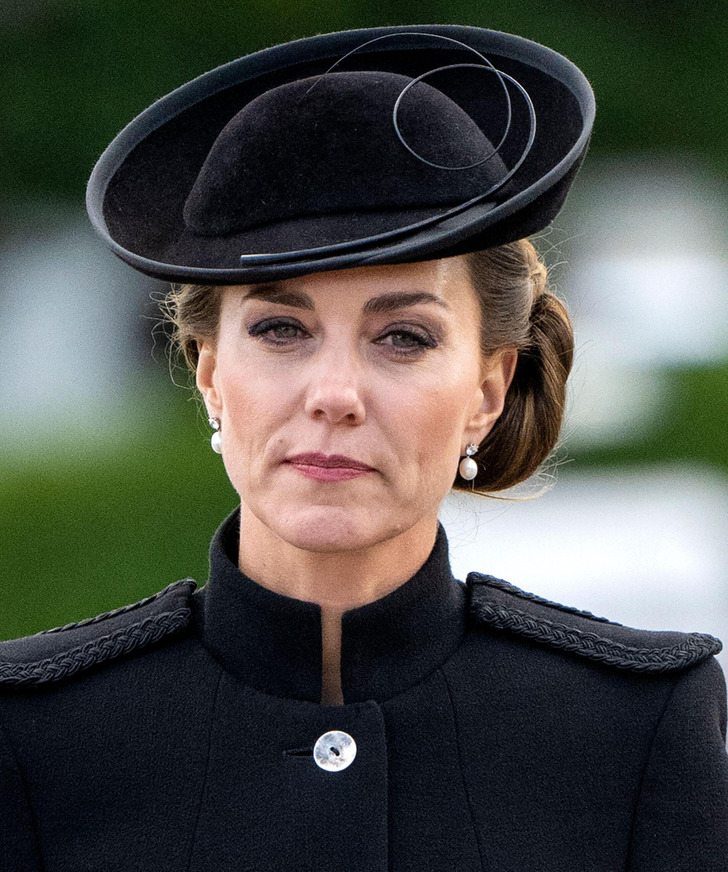
The public was taken aback on January 17 when Kensington Palace announced that Kate, the Princess of Wales, would be having “planned abdominal surgery” and would need time to recover. Mere hours later, Buckingham Palace released a parallel statement revealing that King Charles was receiving treatment for an enlarged prostate.
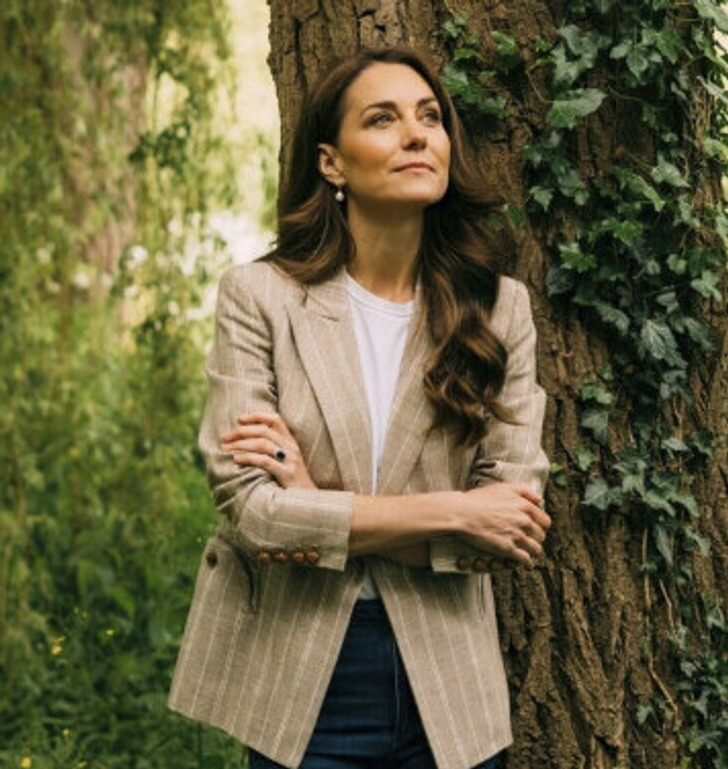
Throughout the two weeks that Princess Kate was hospitalized, Prince William was spotted departing the London Clinic in his sleek Audi. However, their children — Prince George, Princess Charlotte, and Prince Louis — were conspicuously absent, sparking curiosity among the public.
The decision not to appear was intentional.
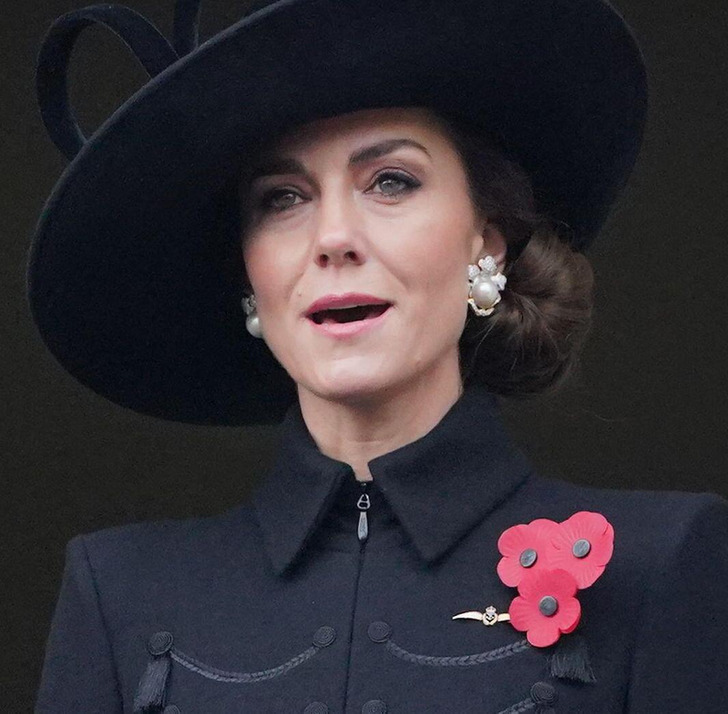
Reports indicated that the decision to keep the children away was intentional. Kate didn’t want her kids to witness her in a hospital gown, attached to monitors and tubes. According to a family friend, life at home was so normal that George played a rugby match while Kate was in the hospital.
Cancer was detected in the tests conducted post-surgery in January, but this information was withheld for two months. During this period, the Wales family faced one of their toughest times. Social media buzzed with wild theories, ranging from slightly odd to utterly outlandish.
Rumors started circulating, leading the royals to reflect on their missteps.
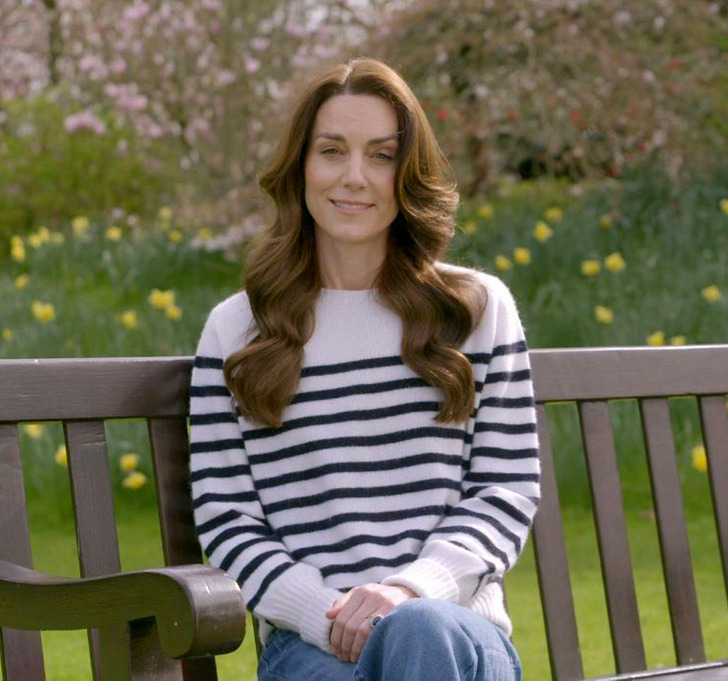
Strangely, Kensington Palace seemed at a loss for how to handle the situation. Speculation ran rampant, with some rumors suggesting that Kate was either hidden away in a Scottish tower or preparing to leave William and move to Santa Fe.
Matters grew even stranger on February 27 when William unexpectedly canceled his attendance at his godfather King Constantine of Greece’s memorial service at St George’s Chapel, citing an unspecified “personal matter.”
However, global skepticism intensified when major photo agencies began to question the authenticity of the images. Even with the benefit of hindsight, and understanding what the Waleses were experiencing, this episode remains one of the most unusual and poorly managed in contemporary royal history.
A royal aide acknowledged that valuable lessons were learned from this ordeal.
A second public appearance.
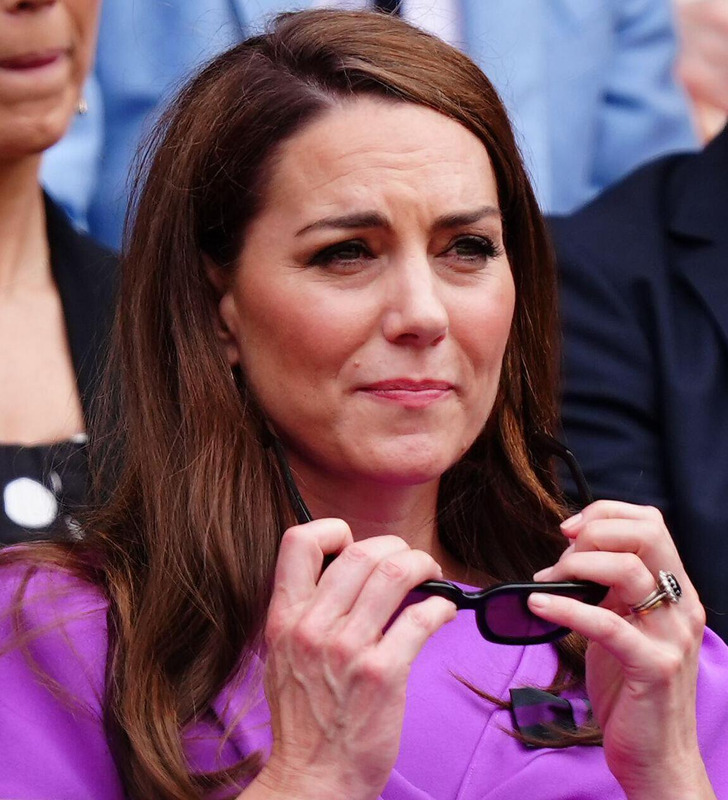
This year has revealed that William and Kate, despite their privileges, are human and imperfect. We often overlook that the princess is a real person, not a flawless icon. Royals can still face challenges and make mistakes.
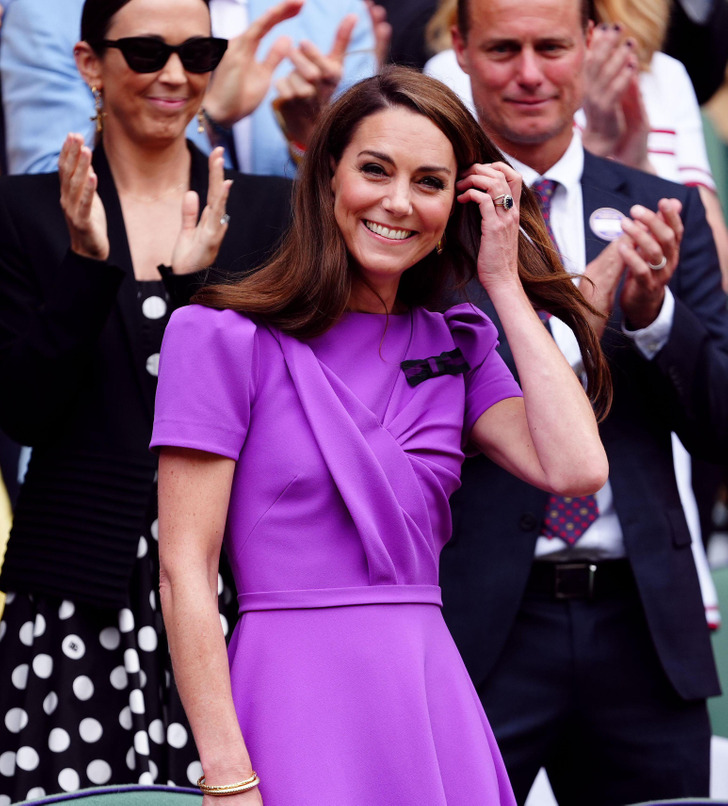
Quashing the swirling rumors and wild speculations, the Princess of Wales attended Wimbledon on July 14 which marked her second public appearance after her diagnosis. With a warm smile and a composed demeanor, she was accompanied by her sister Pippa and daughter Charlotte, immediately putting an end to the outlandish theories.
Her presence reassured everyone that she was well, effectively silencing the frenzy of speculation and reaffirming her commitment to her royal duties. This graceful appearance reminded the world of her resilience and strength, closing a tumultuous chapter in the royal family’s history.
Princess Catherine’s first public appearance since her diagnosis was on June 15 in honor of the King’s official birthday. Check the photos here.



Leave a Reply